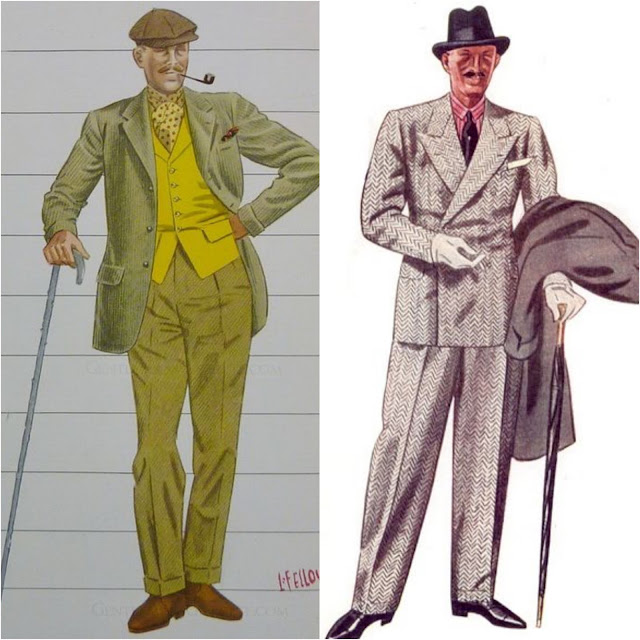It's refreshing to look back at the illustrations of Laurence Fellows (1885-1964). His evocative drawings of men's styles from the thirties and forties (when he worked for Apparel Arts and Esquire and other publications) hark back to an era when maturity and sophistication, rather than the boyishly youthful looks of modern catwalks and advertising, sold menswear.

As menswear advertising became youth-focused over the last forty or fifty years so looking well-dressed became secondary to following fashion. For young men, their clothes show that they're different from the previous generation; for most older men, clothes are the vehicle by which they express their self-confidence and personality. In very general terms, the young man follows fashion, the older finds his own style.
In Fellows' time fashion existed of course, but style remained the ultimate aim - partly because most men had small wardrobes and were unable to afford the large (and unsustainable) volume of clothing of the modern man.


I find Fellows's illustrations rich in inspiration, especially now that vintage styles are influencing menswear. The last few years have seen a revival in interest in suits, hats, brogues, tweed and looser-fitting pleated trousers. Details like shawl collars, tweed caps, waistcoats, pin collar shirts, braces and double breasted coats have been inspired by the likes of Suits, Mad Men, Peaky Blinders and even Downton Abbey. These have encouraged men and women to look back for inspiration to a more sophisticated, sartorial age.

Historically, it was the older man who helped show the younger man learn how to dress properly, just as our grandfathers often helped our fathers. Young men are increasingly to be seen in tweeds and brogue, albeit with a contemporary twist.
Thank heavens that classic looks remain immutably stylish.
(This is an edit of a feature which I first posted here on the blog in August 2017).
